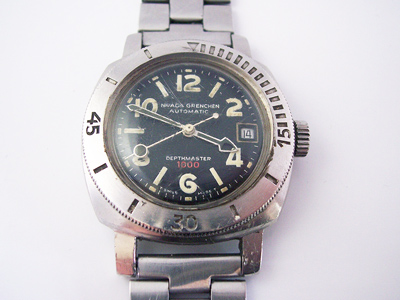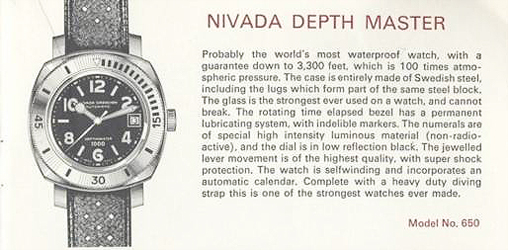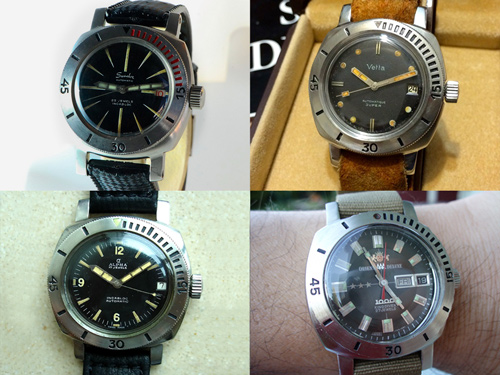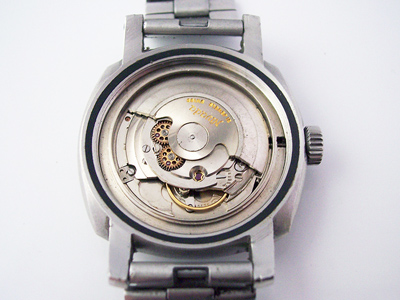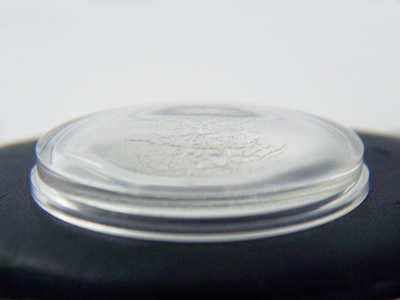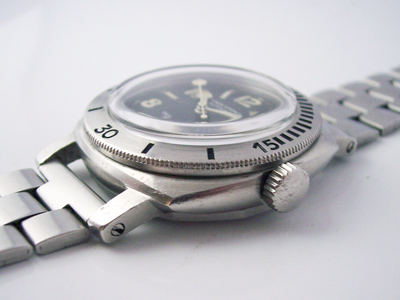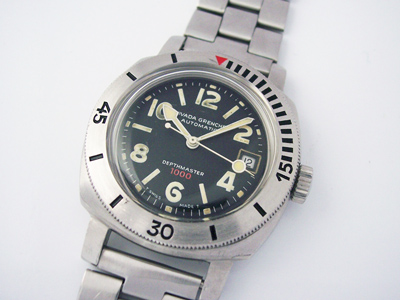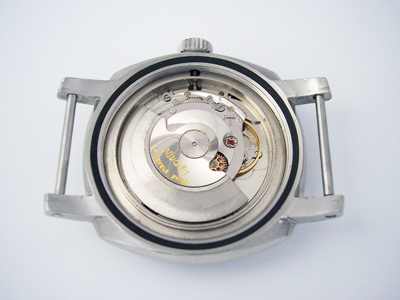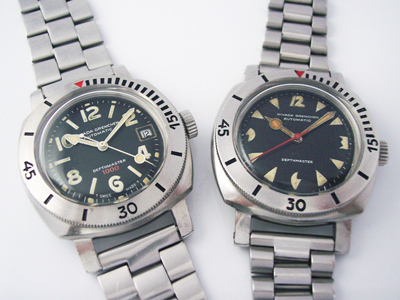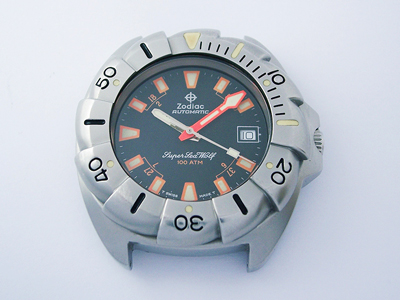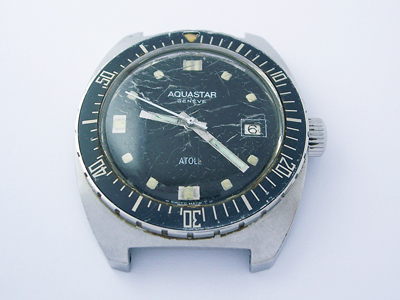I thought I’d round out 2015 by revisiting a somewhat quirky diver, the Nivada Grenchen Depthmaster 1000.
(Click pictures to enlarge)
Long time readers may recognise this model as I wrote about a very similar restoration four years ago. I’ve worked on several of these watches since then so I thought I’d write a second post with a little more information about the model and its history.
Following the successful launch of the Depthomatic in 1964 (the first watch with a built in depth gauge), Nivada Grenchen introduced the Depthmaster the following year with advertisements claiming that it was “tested deeper than any other underwater watch” and it was “Probably the world’s most waterproof watch”.
Watches with high depth ratings were still in their infancy in the early 1960’s and manufacturers were just starting to introduce “extreme diver’s watches” into their model ranges. I’m sure Nivada Grenchen would have liked to have claimed the first 1000m rated watch but that title is thought to have gone to Sandoz who debuted a 1000m watch – using exactly the same case as the Depthmaster – in June 1963.
Sandoz wasn’t the only company to share the same case with the Depthmaster. While the manufacturer of the case is unknown it was used far and wide during the 1960 and 70’s with many companies producing very similar models; Jaquet-Droz, Alpha, Le Phare, Orient, Sylvana, Festina and Vetta to name but a few.
You’ll often see these watches referred to as ‘Baby Panerai’ due to the smaller, yet similar, cushion shaped case.
As you can see in the first picture, time hadn’t been kind to the watch in this post as moisture had found its way into the case at some point and corroded the lume in the hands, some of which had already fallen out. The majority of the bezel markings had worn away and the crystal had crazed as they have a tendency to do after several decades of use.
Inside the case things didn’t look too bad. The movement, an ETA cal. 2472, was complete and although running, obviously hadn’t been serviced for quite some time.
The movement service presented no significant issues so it was straight on to the cosmetic work. The hands were re-lumed to match the numerals on the dial and the remaining paint (and dirt!) was removed from the bezel markings which were then re-applied, a red enamel for the triangle at the top and black enamel for the rest.
With the movement serviced and the majority of the watch rebuilt, the last thing to do was clean the case and bracelet, and replace the crystal. As I mentioned in the previous Depthmaster post, the crystal on this watch is held in place by a threaded ring, screwed into the case from the inside. This has to be unscrewed first before the crystal can be removed (more details here).
It’s rare to find a Depthmaster with an original crystal that hasn’t crazed and as genuine replacements were discontinued years ago, I’ve seen all kinds of mis-matched crystals fitted to these watches to keep them up and running. As you can see below, the crystal has a specific side profile which makes finding a direct replacement near impossible these days.
However, I think it’s well worth making the effort to modify a suitable crystal to replicate the original as the extreme ‘top hat’ profile is one of the defining features of this watch. With the new crystal cut and installed things were already looking better…
… and here’s the watch all finished up.
While this watch was in for restoration, another Depthmaster arrived which gave me a rare chance to take this picture of the two dial designs together.
The ‘art deco’ style is a little more subtle and seems to be rarer in my experience. Two great watches.
Rich.
** Many thanks to John Telling and Keith Johnson for the opportunity to write about their watches on the blog. **

